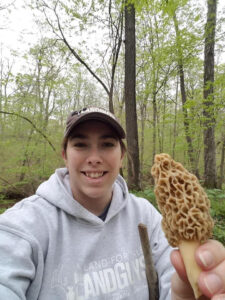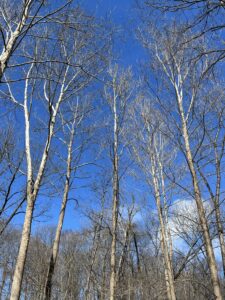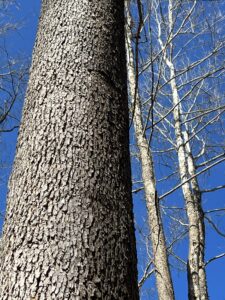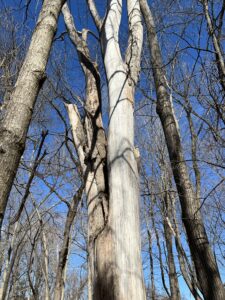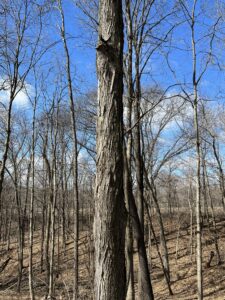Written by: Matt Cox, LandGuys Illinois Land Broker
Look Up Not Down – Mushroom Hunting Tips from Matt Cox
If the last couple of years have been tough for finding morel mushrooms in the spring, there maybe a few spots that you haven’t been checking that can make a difference in your success.
As a youngster I was always told “you will find more mushrooms looking up at the trees than you will looking down at the ground”! Over the years I can honestly say there is more truth to that statement than most people will ever understand. The actual challenge here is learning to properly identify certain types of trees. I have mushroom hunted with a lot of different folks over the years that step into the woods staring at the ground in hopes of stumbling across a mushroom.
This may work for some people but when I was growing up, I could put some serious cash in my pocket if I could find enough mushrooms to sell by the pound. We treated it like a business, and we went for quantity not quality time in the woods. Fast forward a few years, and I enjoy the quality time in the woods with my wife Ashley and my two sons Easton and Camden, but I’ve also learned that we have way more fun when we are finding mushrooms not just hunting for them.
We have all heard the stories of picking ten to twenty pounds of mushrooms under the infamous “dead elm” and I won’t lie, I have stumbled across those trees in the past, but the last couple of years I have not done as well around dead elms as I have other trees such as Hard Maples and Sycamores.
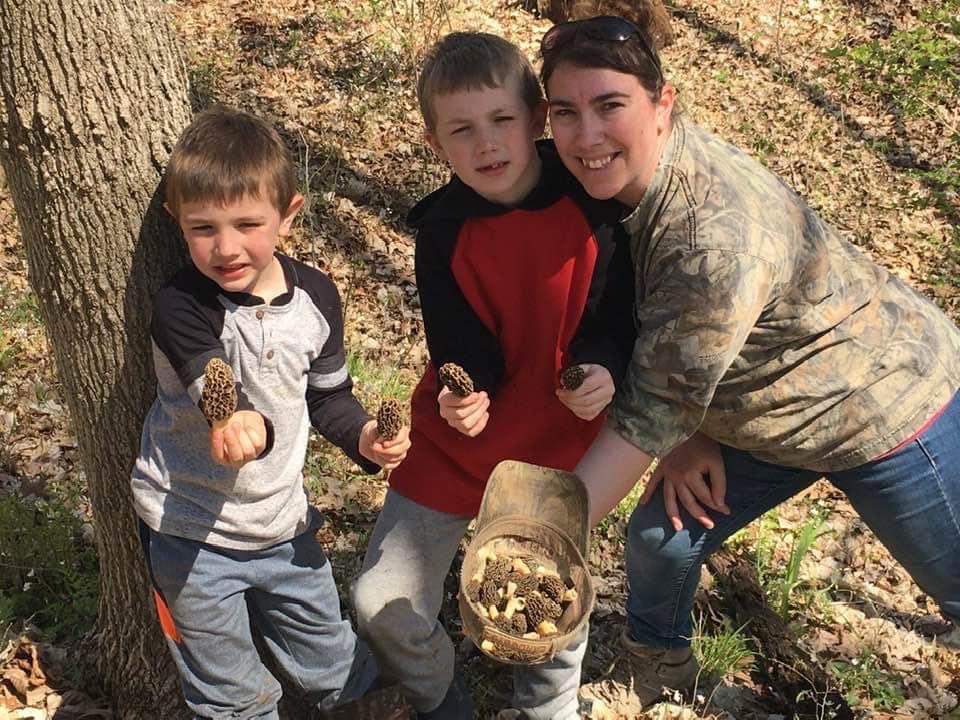
Hard Maples – Producing Mushrooms Early and Often
I’m always intrigued that many people have never heard of finding morel mushrooms around Hard Maples. I have some trees and clusters of these trees that will start producing mushrooms early in the season and continue producing until the very end of the season. In many cases, I will start finding mushrooms early around maples that sit on a South or Southeast facing hillside and often they may start on one side of the tree let’s say the East side, and then slowly progress and end out the season producing on the West side of the same tree. I have no scientific reason why they do, but it holds true year after year.
I have found mushrooms around Hard Maples of every shape and size, but typically I do better on a ridge that has multiple mid-sized trees scattered throughout the ridge. You often won’t find the “mother-load” of mushrooms around these trees and they are usually scattered, but if you find the right ridge or cluster of trees you can often find several pounds around Hard Maples. Once you find a good-producing Hard Maple, make sure to check it several times a year and every year after that. Keep in mind some produce mushrooms early and often, and others may be late bloomers, but I highly recommend checking around hard maple trees.
Sycamore Trees – Producing Mushrooms Middle to Latter of Season
There are more people aware of finding mushrooms around Sycamore trees than those familiar with the Hard Maple, but these trees are usually not an early season-producer. I don’t check Sycamores early in the mushroom season, but when the time is right Sycamores can produce “motherload” patches of morels. These trees typically produce later in the season and are usually surrounded by big “yellows”. I have found mushrooms under every size and shape of Sycamore tree as well.
Some of these trees can be enormous, so I think it’s an important side note to let everyone know that when I say check under these trees, mushrooms can be quite a distance from the actual trunk of the tree. Essentially the root system of every tree extends outward from the trunk nearly as far out as the canopy of leaves that the trunk is supporting. To put this into perspective you could be 30,40, or even 50 feet from the actual trunk of the tree and still finding mushrooms.
The Ever-Popular Dead Elm
The dead elm is the go-to tree that everyone talks about when they go mushroom hunting. One thing I have learned in the past, is I don’t waste my time looking at a tree that has already lost most of its bark. The perfect dead elm will usually only produce mushrooms for a couple of years after the tree has died and is only slipping its bark from its limbs and tops.
Once the tree has started to lose the bulk of its bark off the trunk, I usually don’t spend much time looking around it. It’s also good to keep in mind that every dead tree is not a dead elm. Some of the best-producing dead elms can be hard to spot from a distance as they are just starting to slip the bark on the limbs and upper portions of the tree.
Learn to Identify Tree Species to Improve Your Search
To be fair, I have found morel mushrooms in a myriad of different locations, and around an unspecified amount of different tree species. I have found them around Ash trees, Red Oaks, Cotton Wood, Willows, Hedge rows, and in CRP grass patches. I will be the first to admit that stumbling through the woods staring at the ground can produce a randomly awesome day of mushroom hunting, but in general, if you focus your search around Hard Maple, Sycamores, and Dead Elm you are going to increase your chances of success.
If you can learn to identify these specific trees by studying and learning what their bark looks like, I will assure you that you will ultimately find more mushrooms scanning for the right trees than you will just staring at the ground. Good Luck!!!!
